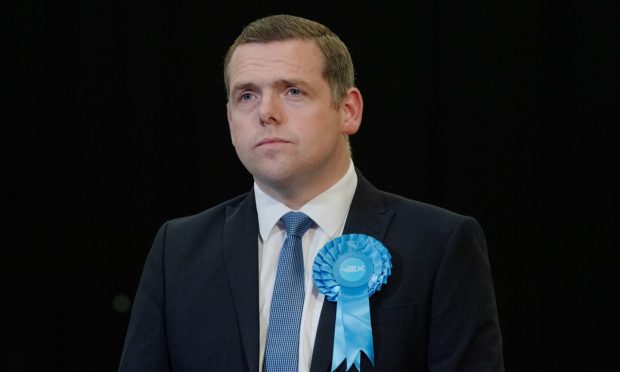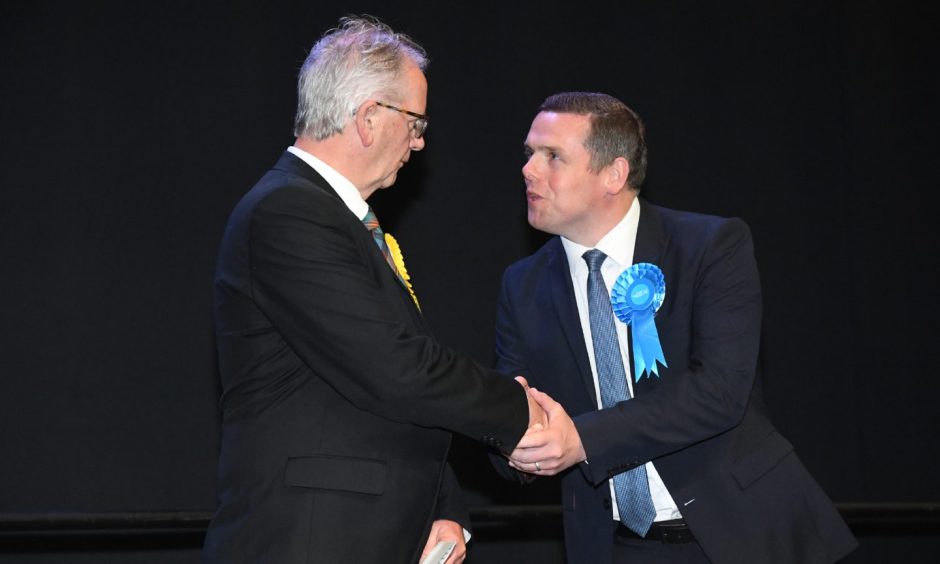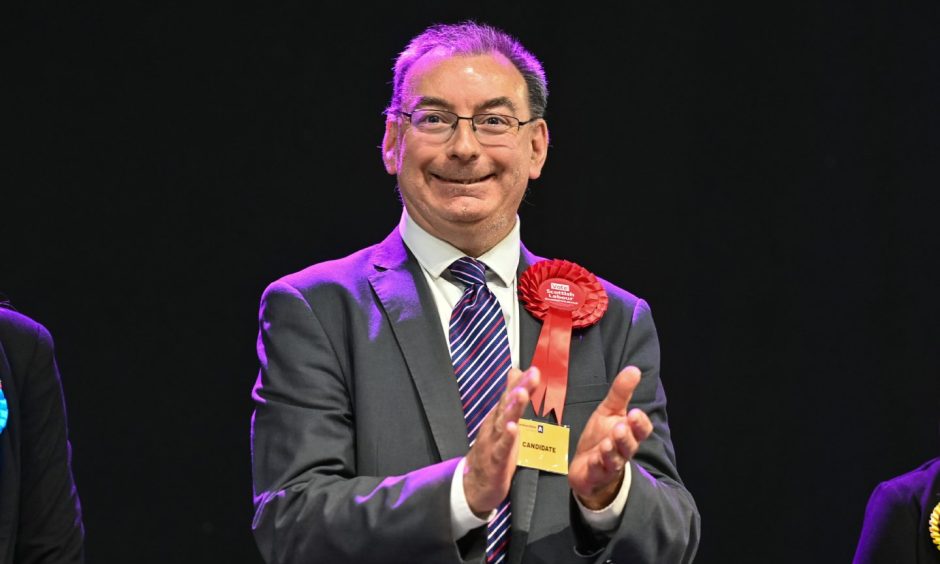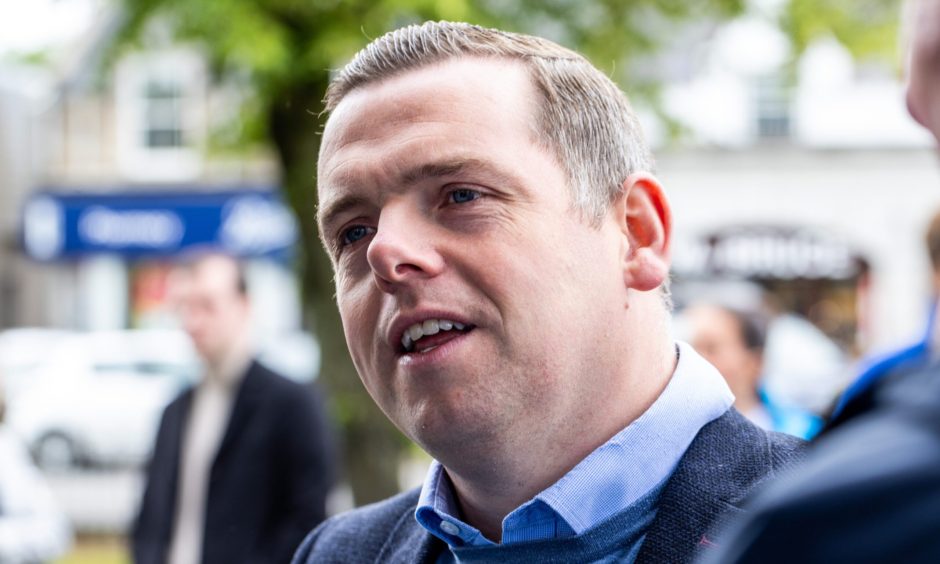Douglas Ross suffered a humiliating loss in last week’s election after his ill-fated decision to stand in the Aberdeenshire North and Moray East seat.
The departing Scottish Tory leader’s controversial choice to replace unwell colleague David Duguid ended up costing him the top job for nought.
But can his defeat be blamed on any single factor, or was Mr Ross the victim of a perfect storm on a difficult night for the Conservatives?
The Reform surge
Nowhere in Scotland did Reform UK pick up more of the vote than in Aberdeenshire North and Moray East, where they were supported by just under 15% of the electorate.
Several Tory insiders believe this was the decisive factor which ended up handing the seat to the SNP’s Seamus Logan.
“There’s no doubt that played a central role in that seat,” one senior source tells us.
“That part of the country was one of the strongest Brexit-supporting areas, so a sizable Reform vote was always a risk.”
The Tories spent much of the campaign in Scotland warning a vote for Nigel Farage’s party would benefit the nationalists.
“That harmed Douglas on the night,” another source said. “When you’re faced with 5,000 votes, it’s a lot to overcome.”
The SNP campaign locally
John Swinney immediately earmarked Aberdeenshire North and Moray East as a priority target for the SNP after Douglas Ross joined the race for Westminster.
He made multiple visits to the constituency to campaign alongside Mr Logan, who is a councillor for the party in Fraserburgh.
But the SNP’s vote share in the area – a new seat drawn up for this election – still fell by 7.9% compared to the notional share they would have secured if the new boundaries were in place at the 2019 election.
One Tory activist in the constituency claimed there wasn’t much enthusiasm for the nationalists on doorsteps despite their wins.
“Most of the people we encountered who were SNP were fed up voting, or fed up voting SNP,” they said. “They were holding their noses.”
David Duguid’s determination to run
Mr Ross U-turning and bidding for a Westminster seat when he had already planned to step back may have proven divisive no matter what.
Yet his decision to stand ended up proving controversial as ditched candidate Mr Duguid insisted he was still fit to run.
Mr Duguid – who had served as Banff and Buchan MP from 2017 – was told by the party he could not contest the seat because he was in hospital after falling seriously ill.
But he repeatedly challenged this on social media and said he would have been able to coordinate a virtual campaign while in hospital.
Even one day before the election he continued to challenge the party and did not offer any endorsement of Mr Ross.
But local activists have their doubts over whether Mr Duguid’s anger swayed too many voters.
“It didn’t come up that often at all,” one source said. “If it did, it was coming from hard line SNP voters who were doing it to wind us up.”
Did Labour’s candidate’s suspension help the SNP?
In a contest that was never short of drama, Labour ditched candidate Andy Brown over historic pro-Russia posts he shared on social media.
He remained on the ballot, but the party withdrew all support.
The Tories would have hoped pro-UK Labour voters backed Mr Ross to keep out the SNP – but could the opposite have happened?
“That’s always a risk,” one source said.
“I’m sure some Labour voters were keen to see they weren’t represented by the SNP, but I’m sure there were others that were keen to give us a kicking.”
“I thought it was quite striking that in the one north-east seat where Labour suspended its campaign, the Tories were beaten,” an SNP source said.
And what about Douglas Ross himself?
The departing Scottish Tory leader has long proven to be a divisive figure with voters, given his vehement opposition to independence and the SNP.
Mr Ross hoped his own name recognition would help tip the party over the edge in a tight race – but did this potentially backfire?
His decision to contest the constituency left MSPs shocked and some warned it would not be tenable for him to keep working at both Holyrood and Westminster.
Days after he stepped back into the void to replace Mr Duguid he resigned as Tory leader, hardly a momentum boost for his flagging campaign.
Party sources say Mr Ross was respected locally and fought a strong campaign.
“He was playing catch-up a bit, but he was out speaking to voters every single day,” one said.
However, a local activist admitted there was a “general disliking” toward Mr Ross in the constituency from some voters.





Conversation